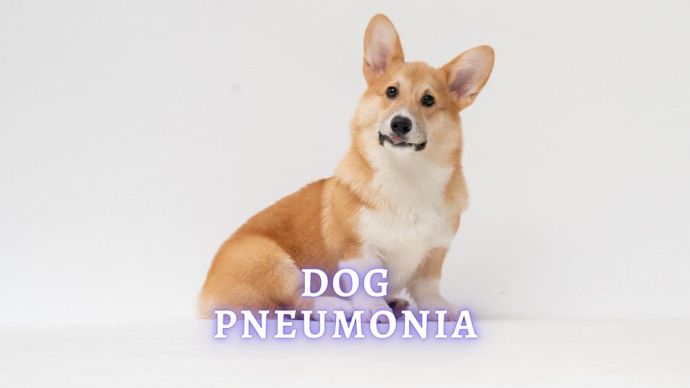Can Dogs Eat Mint? What Type of Mint Can Dogs Eat? Vet Advice
Written by:
Author: Carol Young
Carol has worked in specialty, emergency, mixed animal and general veterinary practices, and enjoys all aspects of veterinary medicine. Her special areas of interest include anesthesia, critical care, emergency, dentistry, internal medicine and small animal nutrition.
View all 62 articlesLearn about our editorial process and veterinary review board.
Viewed: 1629
Updated on: 09/06/2021
Mint has long been a popular herb used in teas, beverages, and various dishes. It has been the main ingredient in many breath fresheners and dental products as well. If you are a dog owner, you may wonder if mint leaves or products that contain them are safe for your canine pal. You will be glad to know that most varieties of mint are safe for dogs, and in some cases, products with it may be beneficial in freshening smelly breath and also aid indigestion.
What is Mint?
Mint is a popular perennial herb that has fragrant leaves with small pink, purple or white flowers. The plant is a very aromatic herb belonging to the family Mentha and was cultivated in the Mediterranean. There are several different varieties of mint, however, each variety can be identified as a member of the mint family by its characteristic square stem. The mint plant is a favorite herb of many gardeners and is easy to grow either in a garden or indoors.
Is Mint Good For Dogs?
If you wonder if mint is good for your canine friend, the good news is that most plant varieties are safe for them, and many dog treats and dental products contain extract from mint leaves. Although it does not offer any nutritional benefits to pups, some suggest that it may aid in soothing upset stomachs. However, as with most things, moderation is important, and dogs probably shouldn’t eat more than a few leaves per day. Of course, if you have any questions or concerns, contact a veterinarian.
READ MORE: Best Dog Toothpaste
What Types of Mint Can Dogs Eat?
If you are curious about sharing a few leaves of your mint plant with your canine companion, there are several types of this plant that are safe to share with your dog:
- Spearmint: [2] This particular type can help cut down on smelly dog breath.
- Peppermint: [3] This plant’s few leaves may help calm a disturbed stomach, just as with humans.
- Wild Mint: [4] Wild plants are full of antioxidants, just like all of these plants, and may help with GI upset.
READ MORE: Why Do Dogs Eat Grass?
What Types of Mint Should Dogs Avoid?
There are some types of mint that are toxic to dogs and should be avoided:
Pennyroyal (common toxic mint): Pennyroyal, known by the scientific name Mentha pulegium, [1] can be toxic to your dog when ingested. It is often an ingredient often used in flea powders and sprays and commonly planted in gardens to repel insects. The active toxin in pennyroyal is a chemical called pulegone, and ingestion of this dangerous mint can lead to liver damage and even death. If you happen to have pennyroyal growing in your garden or anywhere in your home, make sure that your dog does not have access to it.
READ MORE: Can Dogs Eat Sour Cream?
How Much Mint Can Dog Eat?
As mentioned above, moderation is key. Although most varieties of mint are non-toxic to dogs, if your pooch overindulges, it may result in some GI upset. As with any plant material, it’s important to offer your dog only a few leaves now and then. If you are offering your dog candies or human breath mints, then it’s best to discontinue that practice immediately. Candies have a lot of sugar and can cause dental and periodontal disease in your dog, and those breath mints that contain artificial sweeteners can cause organ damage. Artificial sweeteners such as Xylitol are highly dangerous for dogs and can cause a rapid drop in blood sugar, coma, and even death. Some products that contain concentrated mint oils can also cause stomach upset and other GI issues in dogs.
What Herbs Are Not Good for Dogs?
As with anything that your feed your dog, it is good to know what you should not feed your dog. Below is a list of herbs and spices that you should not give to your canine companion:
- Chamomille. This popular ingredient for teas actually can pose a threat to your dog if she ingests the plant and leaves. Most products that contain chamomille are not necessarily dangerous, but if your pooch should ingest any part of the plant, watch for vomiting, diarrhea, skin irritation, and lack of appetite.
- Chives. Chives are part of the onion and garlic family, and as a result, can be harmful to dogs when ingested, and cause anemia (low red blood cell count). Although the level of toxicity is related to the amount eaten, it’s best to avoid sharing this herb with your best friend. Signs of chive, onion, and garlic toxicity include vomiting, diarrhea, lethargy, pale gums, and lack of appetite.
- Hops. Pet owners who brew their beer may want to know that hops are toxic to dogs and can cause panting, seizures, fever, and even death.
- Marijuana. Members of the Cannabis genus can also be harmful to your dog if ingested. The THC in marijuana plants can cause vomiting, incoordination, dilated pupils, uncontrolled urination, and low blood pressure. If you suspect that your pup has ingested any part of a marijuana plant, contact your veterinarian immediately.
- Lavender. The lavender plant contains a small amount of a chemical called “linalool,” which is toxic to both dogs and cats. Although the average lavender plant contains a minute amount of this chemical, toxicity in dogs is very rare. Your dog would have to et a very large quantity of lavender for it to pose a threat.
- Tomato Plant Leaves: Tomatoes are a member of the nightshade family, and if your pup ingests any of its leaves, it can cause some problems. Symptoms of tomato leaf ingestion include drooling, diarrhea, dilated pupils, slow heart rate, and confusion.
The Benefits of Mint
There are several benefits to the mint plant that include the following:
- Rich in minerals like calcium, iron, copper, phosphorous, magnesium, potassium, and zinc.
- High in antioxidants.
- High in Vitamins A and C, which support healthy skin, bones, vision and can boost the immune system.
- High in dietary fiber
- It can aid in relieving an upset stomach, diarrhea, and nausea.
- Can reduce GI inflammation and excess gas
- Has natural antiviral, antimicrobial, antibacterial, and antifungal benefits, which can help to freshen your pet’s breath.
Can Dogs Eat Mints for Bad Breath?
As mentioned above, it’s best to avoid giving your pup any human mint candy as they often contain a lot of sugar or artificial sweeteners that can be toxic to your dog. If you plan on offering your pooch mint-based products for bad breath, be sure to consult a veterinarian and offer only pet-safe products. Also, if you notice that your dog is suffering from bad breath, schedule an appointment with your veterinarian: Your best friend may be due for a dental cleaning. If you decided to offer your pooch a few mints leaves now and then, the chlorophyll in the leaves can act to combat bad breath.
Is it Safe for Dogs to Eat Mint Ice Cream?
Many pups love ice cream, however, ice cream is high in sugar and has no nutritional value for them. Also, many varieties of ice cream contain chocolate chips, and chocolate is toxic to dogs. Ice cream also contains vanilla, which is also harmful to their health. If the ice cream is sugar-free, also steer clear as many artificial sweeteners are toxic as well. Veterinarians discourage owners from offering any kind of ice cream to dogs and recommend appropriate treats made specifically for our canine friends.
FAQ
What Happens If a Dog Eats a Mint?
As mentioned above, many human mint products contain a lot of sugar or toxic artificial sweeteners. If you wish to give your dog a few mint leaves, that should be perfectly fine. However, if there are any signs of vomiting, diarrhea, or weakness after eating a mint, contact your veterinarian immediately.
Will Fresh Mint Hurt Dogs?
Mint leaves can be tasty for your pooch, and can also offer some help for digestive issues. However, as in all things observe moderation, and steer clear of any human candies or breath mints. If you have any questions about offering it to your canine friend, consult your veterinarian.
Can I Put Mint in My Dog’s Water?
You can put mint in your pup’s water if you wish to freshen your canine companion’s breath, but make sure that if you are using oil, that it is approved for use in dogs. You can also add a few leaves to your dog’s water bowl, however, don’t overdo it as too much mint can cause vomiting and diarrhea.
Why Do Dogs Love Mint?
Some pups enjoy the taste of mint, and as mentioned above, mint and dog treats that contain mint can help in cleaning teeth and freshening breath. It is not known for sure why dogs enjoy the taste of mint, but the good news is that most varieties are non-toxic and can be beneficial to your pup.
Article Sources:
- “Mentha Pulegium.” Wikipedia, 6 Sept. 2021, en.wikipedia.org/wiki/Mentha_pulegium.
- “Spearmint.” Wikipedia, 28 Aug. 2021, en.wikipedia.org/wiki/Spearmint.
- “Peppermint.” Wikipedia, 2 July 2021, en.wikipedia.org/wiki/Peppermint.
- “Mentha Arvensis.” Wikipedia, 3 July 2021, en.wikipedia.org/wiki/Mentha_arvensis.
 Dog Veterinary Tips Tear Stains on Dogs: How to get rid of tear stains on dogs? (Vet Advice)
Dog Veterinary Tips Tear Stains on Dogs: How to get rid of tear stains on dogs? (Vet Advice) - 103
- 0
 Dog Veterinary Tips Pneumonia in Dogs: Symptoms, Diagnosis, Treatment and Recovery (Vet Advice)
Dog Veterinary Tips Pneumonia in Dogs: Symptoms, Diagnosis, Treatment and Recovery (Vet Advice) - 478
- 0
 Dog Veterinary Tips Stem Cell Therapy for Dogs: Conditions Treated, Efficacy, and Cost
Dog Veterinary Tips Stem Cell Therapy for Dogs: Conditions Treated, Efficacy, and Cost - 1048
- 0
 Dog Veterinary Tips Kidney Care for Dogs: How to Improve Kidney Function in Dogs? (Vet Advice)
Dog Veterinary Tips Kidney Care for Dogs: How to Improve Kidney Function in Dogs? (Vet Advice) - 754
- 0
 Dog Veterinary Tips Why is my Dog throwing up: Causes and Preventing (Veterinary Advice)
Dog Veterinary Tips Why is my Dog throwing up: Causes and Preventing (Veterinary Advice) - 23424
- 5
 Dog Care Why Is My Dog Bleeding From Its Butt? Causes and treatment of rectal bleeding in the dog
Dog Care Why Is My Dog Bleeding From Its Butt? Causes and treatment of rectal bleeding in the dog - 22074
- 0
 Dog Care My Dog Keeps Scratching His Mouth: Reasons Why Your Dog Scratching Face
Dog Care My Dog Keeps Scratching His Mouth: Reasons Why Your Dog Scratching Face - 17560
- 1




















